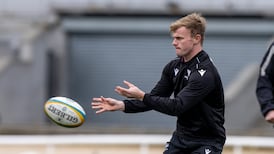Assuming he rides up Alpe d'Huez without being dropped again, then on to the Champs-Élysées on Sunday afternoon without crashing, the first thing Chris Froome might want to do is get off his bike and say God is dead. At least then he could be formally accused of witchcraft.
It would be somewhat fitting, given all the accusations sweeping through the Tour de France over the last three weeks. So much so that even Arthur Miller would have thrown down his pencil.
Wait, if Froome didn’t dope to win this Tour then surely he must have an electric motor hidden inside his bicycle frame?
Nobody has witnessed one of these electric motors being put inside the frame of any bicycle inside the peloton. But, of course, that doesn’t mean they don’t exist. A bit like witches, actually.
Miller based his 1953 play The Crucible on the Salem witch trials, which took place on the Province of Massachusetts Bay in 1693. Although the play was more an allegory of McCarthyism, and the blacklisting of accused communists sweeping through the US at the time, in some ways the play holds up again as an allegory of the Tour.
Reckless
Because for all the questions and doubts about Froome’s performance over the last three weeks – and there are many, including my own – there comes a point when they begin to sound a little reckless, at least without proper regard for the evidence.
Team Sky may well have bound itself to the devil’s surface although if old Judge John Hathorne himself was holding court, would he be entirely convinced?
“In an ordinary crime,” he said of Salem, “witnesses are called to prove guilt or innocence. But witchcraft is an invisible crime. Therefore, who may witness it? The witch, of course. And the victim. Now we cannot expect the witch to accuse herself, can we? Therefore, we may only rely upon her victims.”
Lance Armstrong was ultimately brought down by his victims: Betsy Andreu, Floyd Landis, and our own Emma O'Reilly amongst several others. Justice was done. And, unlike the harrowing closing scene of The Crucible, at least there were none of the blameless victims often associated with a witch hunt. Perhaps the same thing might ultimately bring down Team Sky, although it's simply too soon to tell.
For now, while doping in sport is not necessarily an invisible crime, it shouldn’t become a witch hunt either.
Plenty of expert witnesses have been commenting on Froome over the last three weeks, in print and on air, even if none of them appear capable of proving his guilt or innocence.
There are several things about Froome and Team Sky that don't add up, and there is every reason to wonder why he, and not Alberto Contador, or Alejandro Valverde, both formerly done for doping, is looking so comfortable in the maillot jaune.
Part of the problem is that with the drug testing no longer deemed sufficient to establish evidence of guilt, it has actually become even harder to establish evidence of innocence. Cycling has largely brought all this scrupulous scrutiny onto itself, the constant questioning of what is real and what is not, and for good reason. And the only other sport to come close is athletics.
Evidence
There is plenty of evidence of this in The Bolt Supremacy: Inside Jamaica's Sprint Factory, a new book by British journalist and former racing cyclist Richard Moore.
He, like many of us, watched Usain Bolt produce another supreme sprinting performance at the London Olympics: yet Moore – who had actually spent the previous three weeks covering the Tour – couldn't quite decide whether it was real or not.
So he’s produced a 321-page book to help us and himself decide.
“The broader question that inspired this book was not: is Bolt clean?” he asks himself. “That is too loaded. Rather, I wanted to find out why he is so good. The two questions may be related. But, equally, they might not be. In a way my question was: how can we be certain of our heroes? Can we dare to hope?”
So Moore, who previously explored Ben Johnson's fall from grace after the 1988 Olympics in his previous book The Dirtiest Race in History, spent considerable time in Jamaica, speaking to fans and sceptics of Bolt, family and friends, coaches and rivals.
There he finds an unquestionably talented crop of young sprinters, describing the Jamaican boys’ and girls’ inter-schools championships as a sort of freak show (in a nice way). He considers the genetics, diet, coaching, drug testing – or, indeed, lack of it – and in the end?
“Was I any closer to knowing?” Moore asks himself again, on page 303. And the answer, in his disappointing conclusion, is no.
Moore also presents this problem of proving innocence now being more difficult than proving guilt, and after trawling through all the evidence still can’t quite make up his mind.
Although he does point out an important difference between Bolt and Armstrong: “The case against Armstrong was built on solid evidence over many years. That doesn’t exist in the case of Bolt.”
Same boat
Mo Farah has also found himself in this same boat, and it has become harder to believe whether he’s for real or not, not so much because of the evidence he’s ever doped but the lack of evidence that he hasn’t.
Meanwhile, the UK anti-doping committee this week published its latest list of rule violations, and of the 49 cases where suspensions have currently been applied, 29 of them are rugby players. There are two cyclists on that list, and two athletes.
Now, that may well be a witch hunt, or it may also be evidence that doping in rugby is not necessarily the invisible crime anymore.










